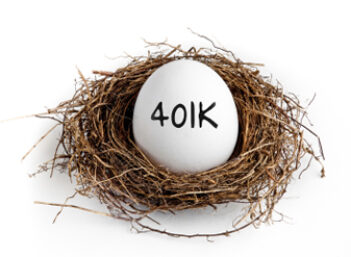When it comes to retirement accounts, the Roth IRA is an investor favorite – and for good reason. It’s a retirement account that offers tax-free growth that can help you reach your saving goals. This article lets you know exactly why you should start investing in a Roth IRA immediately.
What Is a Roth IRA?
A Roth IRA is a tax-advantaged account that you can use to save money for retirement. Unlike bank accounts (which simply hold the cash you deposit), Roth IRAs grow your money. Within a Roth IRA, your money will grow in investments such as:
The money you put into a Roth account has already been taxed, which is a major tax advantage for retirement.
The Tax Advantage of a Roth IRA
Because you invest after-tax money in a Roth IRA, that money – plus any earnings – will be left to grow exponentially without ever being hindered by taxes. When it’s time to retire, Roth IRA withdrawals aren’t taxed by the Internal Revenue Service (IRS) again.
That last part alone is a major advantage over traditional IRAs and 401(k) plans, both of which are tax-deferred plans. Tax-deferred means that you put money into the account pre-tax and are then required to pay federal income tax when you make withdrawals later.
Who Can Invest in a Roth IRA?
According to the IRS, anyone can contribute to a Roth IRA – at any age – as long as you are earning taxable income made in the US. In addition, you must meet the income limits for each year you contribute to a Roth IRA.
Who Should Invest in a Roth IRA?
This is a trickier question to answer because it depends on your future retirement goals. In general, a Roth IRA is a good investment option for you if:
You want to take out tax-free money by putting in after-tax income.
You know you’re eligible for the account
You need to contribute to retirement at a later age (you can be any age and make contributions to both a Roth IRA and Traditional IRA).
You want to have several retirement accounts to diversify your portfolio.
You plan to retire early and want to make withdrawals before turning 591/2 without tax penalty.
As always, it’s important to do your own research to see whether this investment vehicle is right for you.
How a Roth IRA Can Save You Money on Taxes
A Roth IRA is not only a great way to build a nest egg for retirement, but it also can save you when it comes to income taxes in the future.
Say an investor opens two retirement accounts today: a traditional IRA and a Roth IRA. The investor saves $200 every month in each of the accounts. Assuming both accounts earn an average of 9% per year, each fund would grow to a handsome $936,264 after 40 years, according to our simple savings calculator.
Both accounts will help you build wealth. The savings on taxes with a Roth IRA come later when it’s time to retire and make withdrawals. If the investor were to withdraw $50,000 each year from a traditional IRA, the effective tax rate would be somewhere around 10% to 15%. This means the investor would have to pay $5,000 to $7,500 in income taxes for that withdrawal. Ouch!
But if the investor chose to take money from a Roth IRA while in retirement, the $50,000 per year withdrawals wouldn't be taxed at all. That’s because you have already paid taxes on that money before it was invested.
8 More Reasons to Invest in a Roth IRA
By now, you probably see that the Roth IRA is a stellar retirement option. But given the different ways retirement accounts are taxed, how do you know if a Roth IRA is the right choice for you? If you fit any of the scenarios below, you should seriously consider investing in one:
1. Your employer doesn't offer a 401(k) plan but you still want to invest for retirement.
Don't let the lack of a company 401(k) plan keep you from saving: A Roth IRA is a great tool for almost any working person at any age.
You can be a 16-year-old with a summer job or a self-employed entrepreneur – as long as you earn your income from work and meet the requirements listed below, you can save toward retirement through a Roth IRA.
2. You want to invest in a wider selection of investment choices than your 401(k) plan offers.
With 401(k) plans, you might be limited to investing in the few mutual funds that your employer has chosen. But when you open a Roth IRA through an online brokerage, you can invest in any stock, bond, ETF, option, or mutual fund you want. You're also free to sell the investments that aren't working for you without triggering a taxable event (as long as it's all done within the Roth IRA account).
3. You've maxed out your 401(k) plan contribution limit for the year but you still want to put more toward retirement.
Manage to hit your 401(k) plan's annual contribution limit of $19,500 ($26,000 for those age 50 or older as of 2020)? That's a problem many of us wish we had. In this case, you’ll want to look again at the Roth IRA.
The amount you can contribute to a Roth IRA is not affected by 401(k) plan contributions, so you can keep putting money into your Roth IRA up to its $6,000 ($7,000 for ages 50+) contribution maximum – long after the 401(k) is filled up.
4. You're not in your peak earning years and expect to have a higher annual income in retirement.
If you're working part-time – or expect you'll have a larger annual income in retirement – you can use the Roth IRA to take advantage of your lower tax rate situation right now.
For example, if you're currently earning $20,000 per year but are planning to withdraw $50,000 per year in retirement, you may be best suited with a Roth IRA. You can pay taxes now while you're in a lower income tax bracket and won’t have to pay income tax on withdrawals when you're in a higher tax bracket during retirement.
5. You expect income tax rates to rise in future decades.
Income tax rates are near historical lows, even with the top tax bracket being 37% (post-2018 tax reform). But with the federal government's rising debt and deficits, many aren't holding their breath that taxes will stay low forever.
Contributing to a Roth IRA will let you take advantage of today's low tax rates and let you take withdrawals tax-free in retirement, no matter what happens with future income tax hikes.
6. You want penalty-free access to your money in case of emergencies.
While you should try to avoid raiding your retirement fund, unexpected events happen. Under a 401(k) plan or traditional IRA, any early withdrawals you take out before age 591/2 will get slapped with federal and state income taxes plus a 10% early withdrawal penalty.
With a Roth IRA – under the IRS ordering rules – all of the contributions (not earnings) you make may be withdrawn at any time without tax or penalty.
So if you contributed $20,000 over the years into your Roth IRA, you can take up to that amount without taxation. Just remember to leave your investment earnings in the account alone: That part will be taxed and given the 10% penalty if you try to take it out before 59 ½. And try to avoid making too many withdrawals because you don't want your retirement to suffer!
7. You want to leave your heirs with a tax-friendly inheritance.
Some have called the Roth IRA 'the best retirement fund to die with' – and that may not be a far-fetched statement. As long as your heirs are labeled as beneficiaries and don't touch your Roth IRA for the five-tax-year waiting period after you're gone, they may take distributions from your Roth IRA without taxation or penalty.
And if your spouse is the sole beneficiary, they may take ownership of your Roth IRA and take withdrawals any time after you're gone. In other words, should you die with a $1 million fortune in your Roth IRA, your family will be well-taken care of.
8. You're older than 70 and want to keep building your nest egg.
Whether you're forced to go back to work or you simply don't want to quit, it's nice to know that the Roth IRA lets you keep saving with tax-free growth toward retirement no matter your age.
With a traditional IRA or 401(k) plan, the IRS requires you to start taking minimum withdrawals (called RMDs) after age 72 no matter what. But with the Roth IRA, you're never required to withdraw funds and can keep contributing regardless of your age.
Roth IRA Rules You Need to Know About
To be sure you’re eligible and ready to pursue this investment account, we’ll go over the Roth IRA rules in greater detail:
1. There Are Income Eligibility Limits for a Roth IRA.
If you want to contribute the maximum allowed amount to your Roth for the 2020 tax year, you must have a modified adjusted gross income (MAGI) of less than $124,000 per year ($196,000 for married joint filers and qualifying widow(er)s). You can still make a limited contribution as long as your MAGI is less than $139,000 ($206,000 for married joint filers and qualifying widow(er)s).
Note: High-income earners may be able to get around these income limits through a Backdoor Roth IRA.
2. You Can Only Contribute Earned Income
You can only contribute 'earned' income into your Roth IRA. This is money you made from salary, wages or self-employment. For example, a college student who earned $2,000 from his summer job may contribute up to $2,000 into his Roth IRA. Monetary gifts are not acceptable.
3. There’s a Limit to Annual Contributions
In 2020, you may contribute up to a maximum of $6,000 ($7,000 if you're older than 50) into your Roth IRA.
4. There’s a 5-Year Waiting Period for No Tax Penalties on Withdrawals
You can withdraw your contributions from a Roth IRA at any time without paying a tax penalty. However, before withdrawing your investment earnings you must have the Roth IRA open for at least five tax years and be older than 591/2 (unless you want to get hit with the IRS’ 10% early withdrawal penalty.
There are certain exceptions to this rule (like conversions). If you want to dig more into it read 5 Safe Ways to Tap Your Roth IRA Before You Retire.
Note: For more details on Roth IRA rules, check the IRS website.




